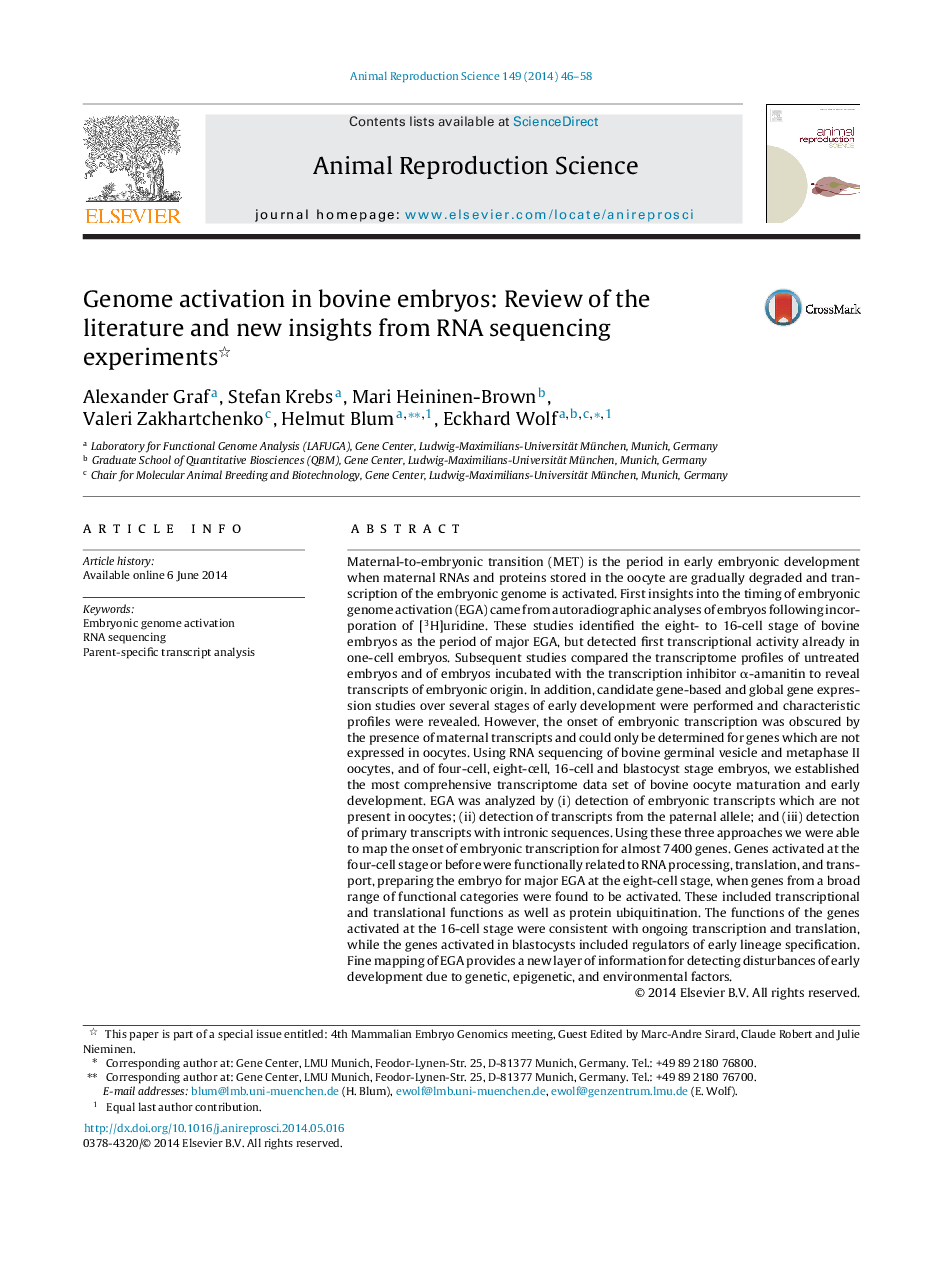| کد مقاله | کد نشریه | سال انتشار | مقاله انگلیسی | نسخه تمام متن |
|---|---|---|---|---|
| 2072793 | 1544731 | 2014 | 13 صفحه PDF | دانلود رایگان |

• We review studies on bovine embryonic genome activation (EGA).
• We provide new insights into EGA by RNA sequencing (RNA-Seq).
• A gene ontology analysis of genes activated at the 8-cell, 16-cell, and blastocyst stage is provided.
• An outlook into potential applications of single cell RNA-Seq is given.
Maternal-to-embryonic transition (MET) is the period in early embryonic development when maternal RNAs and proteins stored in the oocyte are gradually degraded and transcription of the embryonic genome is activated. First insights into the timing of embryonic genome activation (EGA) came from autoradiographic analyses of embryos following incorporation of [3H]uridine. These studies identified the eight- to 16-cell stage of bovine embryos as the period of major EGA, but detected first transcriptional activity already in one-cell embryos. Subsequent studies compared the transcriptome profiles of untreated embryos and of embryos incubated with the transcription inhibitor α-amanitin to reveal transcripts of embryonic origin. In addition, candidate gene-based and global gene expression studies over several stages of early development were performed and characteristic profiles were revealed. However, the onset of embryonic transcription was obscured by the presence of maternal transcripts and could only be determined for genes which are not expressed in oocytes. Using RNA sequencing of bovine germinal vesicle and metaphase II oocytes, and of four-cell, eight-cell, 16-cell and blastocyst stage embryos, we established the most comprehensive transcriptome data set of bovine oocyte maturation and early development. EGA was analyzed by (i) detection of embryonic transcripts which are not present in oocytes; (ii) detection of transcripts from the paternal allele; and (iii) detection of primary transcripts with intronic sequences. Using these three approaches we were able to map the onset of embryonic transcription for almost 7400 genes. Genes activated at the four-cell stage or before were functionally related to RNA processing, translation, and transport, preparing the embryo for major EGA at the eight-cell stage, when genes from a broad range of functional categories were found to be activated. These included transcriptional and translational functions as well as protein ubiquitination. The functions of the genes activated at the 16-cell stage were consistent with ongoing transcription and translation, while the genes activated in blastocysts included regulators of early lineage specification. Fine mapping of EGA provides a new layer of information for detecting disturbances of early development due to genetic, epigenetic, and environmental factors.
Journal: Animal Reproduction Science - Volume 149, Issues 1–2, September 2014, Pages 46–58